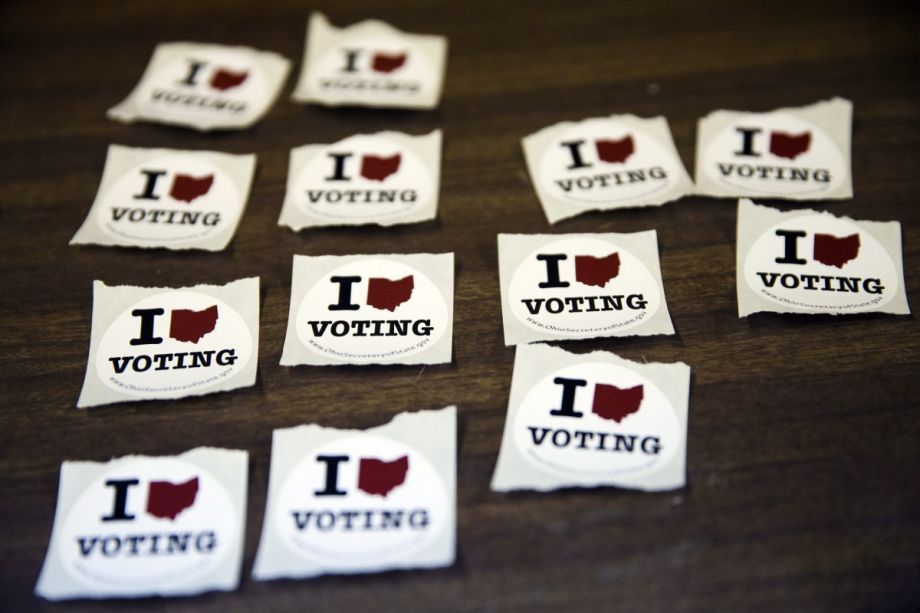Big cities have always had their big pull and importance in presidential races. It’s pretty simple: More people, more votes, more time spent campaigning in those big cities. The candidate who takes Chicago and Cook County will more than likely get Illinois’ 20 electoral votes. Same can be said historically for Detroit and Michigan. Or even Boise and Idaho.
But some of the old trends have been tweaked a little bit in recent elections. Bigger cities in the Northeast and Midwest have lost population and economic clout — and therefore a little bit of their political influence. More importantly, the states that have the largest populations and largest cities — California, Texas, New York, Illinois — are more than likely not in play for the presidential general election in November. Unless something unforeseen happens, there are established “red” and “blue” states, and Hillary Clinton and Donald Trump aren’t likely to do much campaigning in those because the outcome is a forgone conclusion.
I see five states, all in play, with urban areas that could have a big impact in the fall: Ohio, Florida, Colorado, Iowa and Pennsylvania. They are all grappling with many of the major issues of this year’s race — economic populism, trade, immigration reform, healthcare reform and civil rights. Cities aren’t monolithic single-issue places, and in order to win these important states, the Democratic and Republican candidates will have to assemble a broad range of voters from differing demographics (age, income, race, job) in place of the more single-issue campaigning they’ve done in the primaries.
Cities aren’t winner-take-all places. Move the needle a bit to the right or the left, and the state’s Electoral College votes can go that way. In 2012, President Barack Obama won Colorado by about 4 percentage points, or 113,000 votes. Obama won the Denver metro area by 220,000. If Republican candidate Mitt Romney had taken 57,000 of those Denver votes from Obama (about 2.4 million votes were cast statewide), he would have won Colorado and its nine electoral votes.
The same is true for other cities. Move their needle a few percentage points this way or that, and the state is won. With that said, here are five cities to watch as the 2016 presidential campaign gets moving into its next phase.
Jacksonville, Florida (29 electoral votes) — The political pundits always like to focus on Miami-Dade County in south Florida as the only area of prime importance in taking that state, and it is a big elephant in the room. But Jacksonville is the largest city in Florida (pop. 850,000), and it seems to be ripe for the taking by either party. Obama lost Duval County in 2008 and 2012, but both times by less than 4 points. Jacksonville is different from most of the rest of Florida, with more of that “Southeast Conference” electorate than Miami. Much of its economy is in the manufacturing sector (auto parts and paper mills), and it is highly dependent on foreign trade economy because it is a big seaport. Less than 2 percent of its manufacturing sector workers are unionized, so it will be interesting to see how the economic issues play in an area — especially an anti-foreign trade message — that has job growth but not corresponding wage increases. Obama won Florida by just 73,000 votes in 2012 and lost Duval County by 15,000, so a small change in how Jacksonville votes may have a major impact.
Philadelphia, Pennsylvania (20 electoral votes) — A big issue in any election is turnout, and Obama won big cities like Philadelphia by wide margins in 2008 and 2012, taking 83 percent and 85 percent respectively in Philly in those years. Many Democrats have worried that turnout of African-American and younger millennial voters will not be as high in 2016 because an African-American won’t be on the top of the ticket. Not that they won’t show up to vote at all, just not in the big numbers of the last two elections. Whether Obama supporters head to the November polls in Philadelphia is a critical factor. The president won the state of Pennsylvania by 288,000 votes in 2012, and he won Philadelphia County by 466,000. So if under-30 and minority voters come out in Philly in big numbers this year, Pennsylvania will stay blue. But if some stay home, the more conservative, more rural parts of the state might prevail.
Des Moines, Iowa (6 electoral votes) — When one thinks of cities where millennials are flocking, Des Moines doesn’t usually come to mind. But in 2015, about 60 percent of the homebuyers in the area were millennials, and it was the only city in the country to be above 50 percent of millennial buyers. So how does that affect voting behavior in Iowa? Des Moines is one of the only growth areas in Iowa, and younger people are moving there for good jobs in the insurance and banking industries and a low cost of living. The state has grown in population by about 197,000 since 2000, and nearly half of that, 85,000, is in Polk County, of which Des Moines is the seat. Obama won by 6 points in Iowa in 2012, but by 14 percentage points in Polk County that year. If Republicans want to turn Iowa “red,” they are going to have to make inroads into Des Moines. But given the growth of the younger population in Des Moines, that gets much harder to do this time around.
Columbus, Ohio (18 electoral votes) — The politics of Ohio used to be fairly simple and evenly split: The Cleveland/Youngstown/Akron-Canton area of Northeast Ohio voted Democrat, while the downstate farmers and residents of Columbus and Cincinnati went Republican. But there has been a shift in Columbus in both population and political temperament that has changed election dynamics of the state. While Cleveland and Northeast Ohio are flatlining in terms of population growth, Columbus has grown by 7.6 percent since 2010. Franklin County (home to Columbus) also voted for Obama by about a 60/40 margin in both 2008 and 2012. The major employment industries in the Columbus area are government, banking, insurance, higher education and healthcare. So the area in Ohio that has the highest population growth — and had voted Democrat in the last two presidential elections – doesn’t seem too inclined to flip its numbers to a more extreme conservative candidate. And here’s the kicker: Obama won Ohio by 100,000 votes in 2012, and he won Franklin County by 120,000. For Republicans to win Ohio, they probably need to go 50/50 in Columbus. That seems like a tall order at this point in time.
Denver, Colorado (9 electoral votes) — Of the states with the largest Hispanic population — California, Texas, Florida, New York and Illinois — only one, Florida, is likely to be in play in November. Florida’s Hispanic voters, who are more Puerto Rican and Cuban, tend to focus on different concerns than Hispanics of Mexican heritage in other states. But there is one state in play that has a big and growing Hispanic population, one that is about 75 percent of Mexican descent, and that is Colorado. The Denver area makes up about half of the state’s population, and with Denver’s metro population being about 20 percent Hispanic, how that demographic votes will likely decide the state. Drawn to jobs in the region’s construction and tourism/hospitality industry, they will be eyeing economic policies that impact wages and healthcare. Hispanics now make up 14 percent of the state’s voters, and most of them are in the Denver area. Obama won Colorado by 5 points in 2012, and it was Denver that put him over the top. That was buoyed by him taking 75 percent of the Hispanic vote from Romney in the state. Some analysts have predicted that a Republican would need to get at least 35 percent of the Hispanic vote in Colorado to have a chance at winning the state. But that is a very tough nut to crack, given that the Hispanic population is growing in the Denver area, and the latest national poll says that 77 percent of Hispanics have a negative view of Donald Trump.









